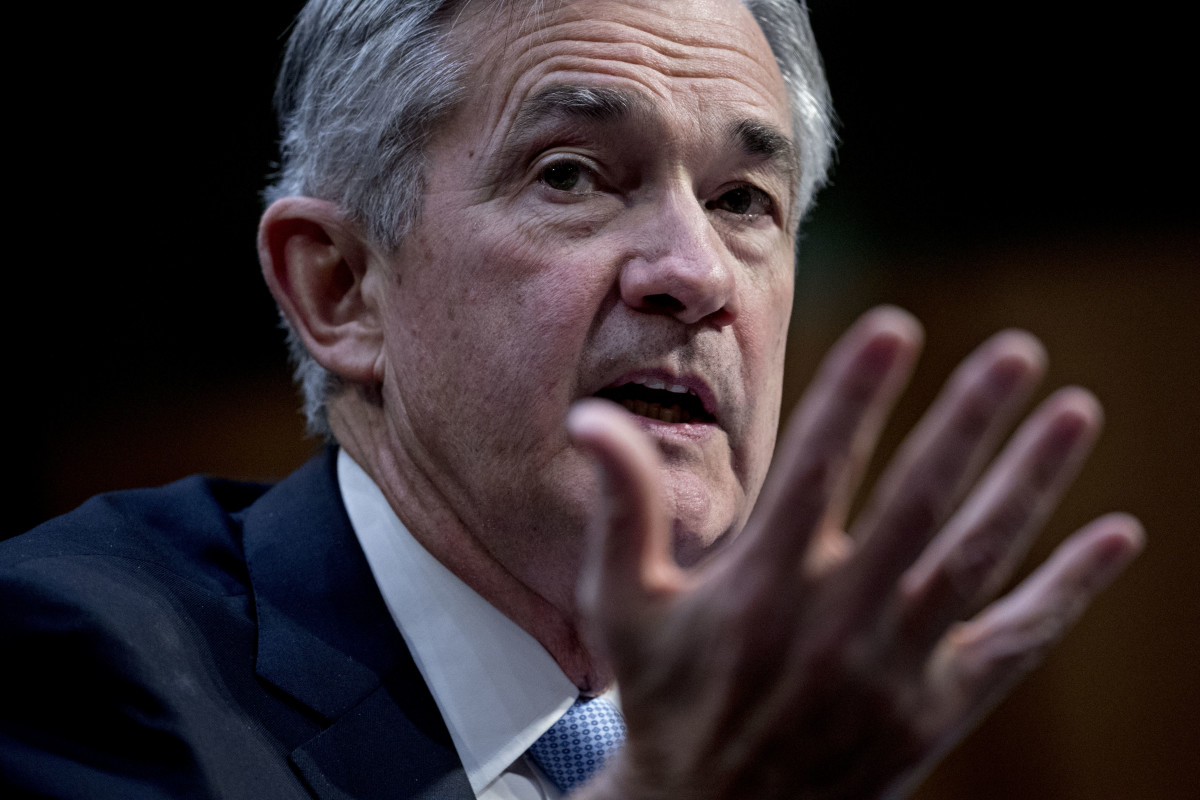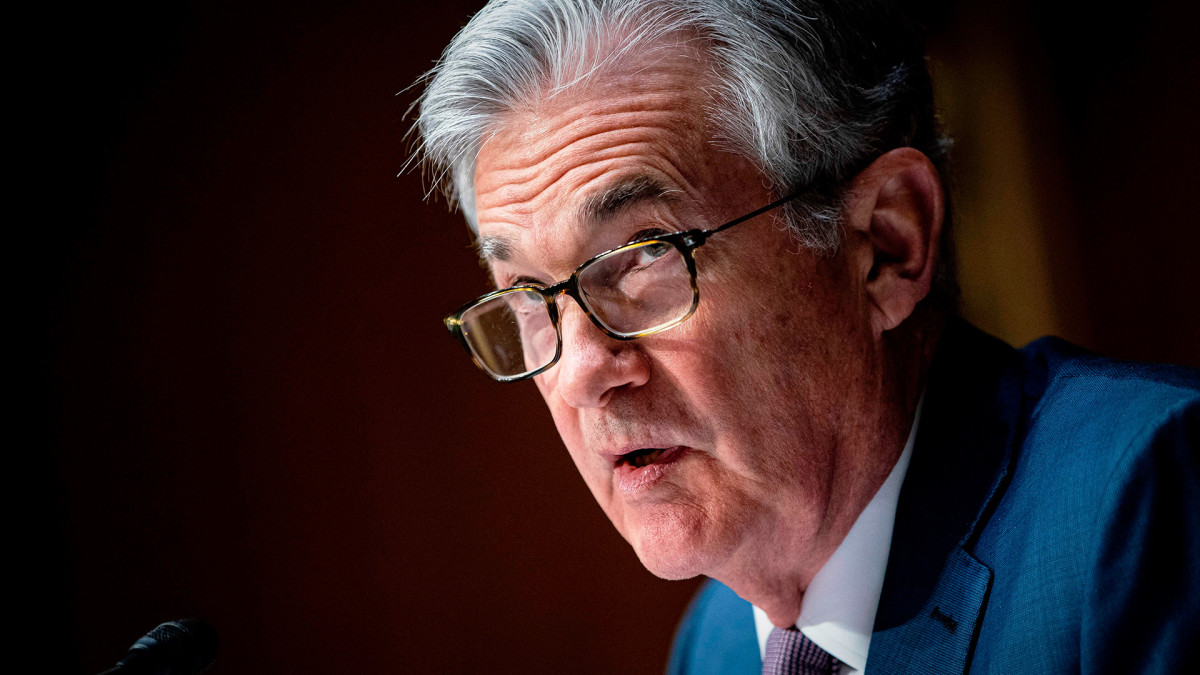
The Federal Reserve announced on March 20 that it was holding its key lending rate, the Federal Funds Rate, at current levels and suggested it will begin cutting rates soon.
The decision was expected, and the Fed's statement on its decision was little changed from its Jan. 30-31 meeting.
But the Fed is historically patient when it perceives it has time to be sure the decision is necessary.
Here are the five biggest takeaways from the Fed's announcement and the news conference Chairman Jerome Powell held after the decision to keep rates unchanged.

AL DRAGO/POOL/AFP via Getty
Barring calamity, rate cuts are coming.
The federal funds rate was left at 5.25% to 5.5%, where it's been since July 2023.
The rate is what the Fed wants banks to lend reserves to each other for regulatory purposes. Why it's important: The fed funds rate is the foundation on which all U.S. interest rates are derived.
In November, the Fed said it was done raising rates and would look to start cutting rates. The big fall 2023 stock market rally erupted because investors were expecting the announcement.
Related: Analysts issue unexpected crude oil price forecast after surge
Some thought the first rate cut would come this month, but Powell nixed that idea last month as basically too soon. The New York Times suggested the first rate cut will come in June, in part so that the decision does not disrupt the fall elections.
The Fed still wants to cut rates so long as it is confident domestic inflation will inch closer to 2% on a sustained basis.
There's been a little snag on that point. Two recent reports showed inflation ticking up more than expected. And, Powell told reporters, “The risks are really two-sided here: We’re in a situation where if we ease too much or too soon, we could see inflation come back. If we ease too late, we could do unnecessary harm to employment.”
Wall Street cheered the Fed decision
The Street took the Fed at its word that rates will come down and bought.
The major stock market averages — the Dow Jones Industrial Average, the Standard & Poor's 500 Index, and the Nasdaq Composite Index — all closed at record highs.
The rally was very broad. Boeing (BA) added 3.7%. Doordash (DASH) was up 5.4%. JPMorgan Chase (JPM) added 1.1%. The iShares U.S. Home Construction Exchange-traded Fund (IWM) rose 2.1%. The iShares Russell 2000 Exchange-traded Fund (IWM) added 2%
Bond prices rose as interest rates fell. The 10-year Treasury yield fell to 4.276% on March 20 after a near-term peak of 4.334%.
Mortgage rates fell according to data from Mortgage News Daily, with the 30-year rate holding at 7.03%.
Freddie Mac's weekly survey of national mortgage rates is due out on March 21. On March 14, the survey showed the 30-year rate at about 6.74%.
The Fed still sees three cuts in 2024
The famed dot plot, a document that shows where the members of the Federal Open Market Committee see rates by the end of the year, shows three cuts.
Most committee members see the fed funds rate at about 4.63% at the end of the year.
That would probably bring the rate on a 30-year mortgage to 6.5%, maybe less.
More Economic Analysis:
- Bond markets tell Fed rate story that stocks still ignore
- February inflation surprises with modest uptick, but core pressures ease
- Vanguard unveils bold interest rate forecast ahead of Fed meeting
'This is a good economy'
That was Powell's one-sentence description of the current situation.
Here's why he thinks that:
"Growth is solid to strong over the course of last year. The labor market — 3.7 % unemployment indicates that the labor market is strong. We’ve had just about two years now of unemployment under 4%. That hasn’t happened in 50 years. And we’ve seen inflation come down."
What he wants now is to be sure inflation does not reignite. So the Fed can bring rates down.
The Fed is a risk manager
The central bank, Powell said, has essentially gone into the risk-managing business right now.
And it can be a bit maddening to someone on the outside.
The pivot point is serious business: Moving too quickly to cut interest rates risks setting off inflation. Moving too slowly (and there are critics who say the Fed is moving too slowly) risks causing the economy to stall.
The 19 members of the Federal Open Market Committee, the Fed's rate-making body, "is in favor of moving rates down this year," he said, "But the timing of that is going to be linked to our gaining confidence that inflation is on a sustainable path down to 2 percent."
Some wariness about inflation
While Powell and the Fed won plaudits for their thinking, a few were less excited.
One was Stephen Guilfoyle, a columnist on TheStreet Pro. He is concerned about the recent inflation CPI and PCE reports and thought the Fed should have been stronger on the inflation threat. "It would have been smart to put a little fear into financial markets that a rate hike would be possible later this year if recent trends persist as long as the economy is still strong enough to handle it."
Another was Michael Contopolous, director of fixed income at Richard Bernstein Advisors. Like Guilfoyle, he found the recent inflation reports worrisome.
On CNBC's Fast Money show on Wednesday, he said, "Three lousy (inflation) numbers in a row, and we're going to have a different conversation."
Related: Veteran fund manager picks favorite stocks for 2024







